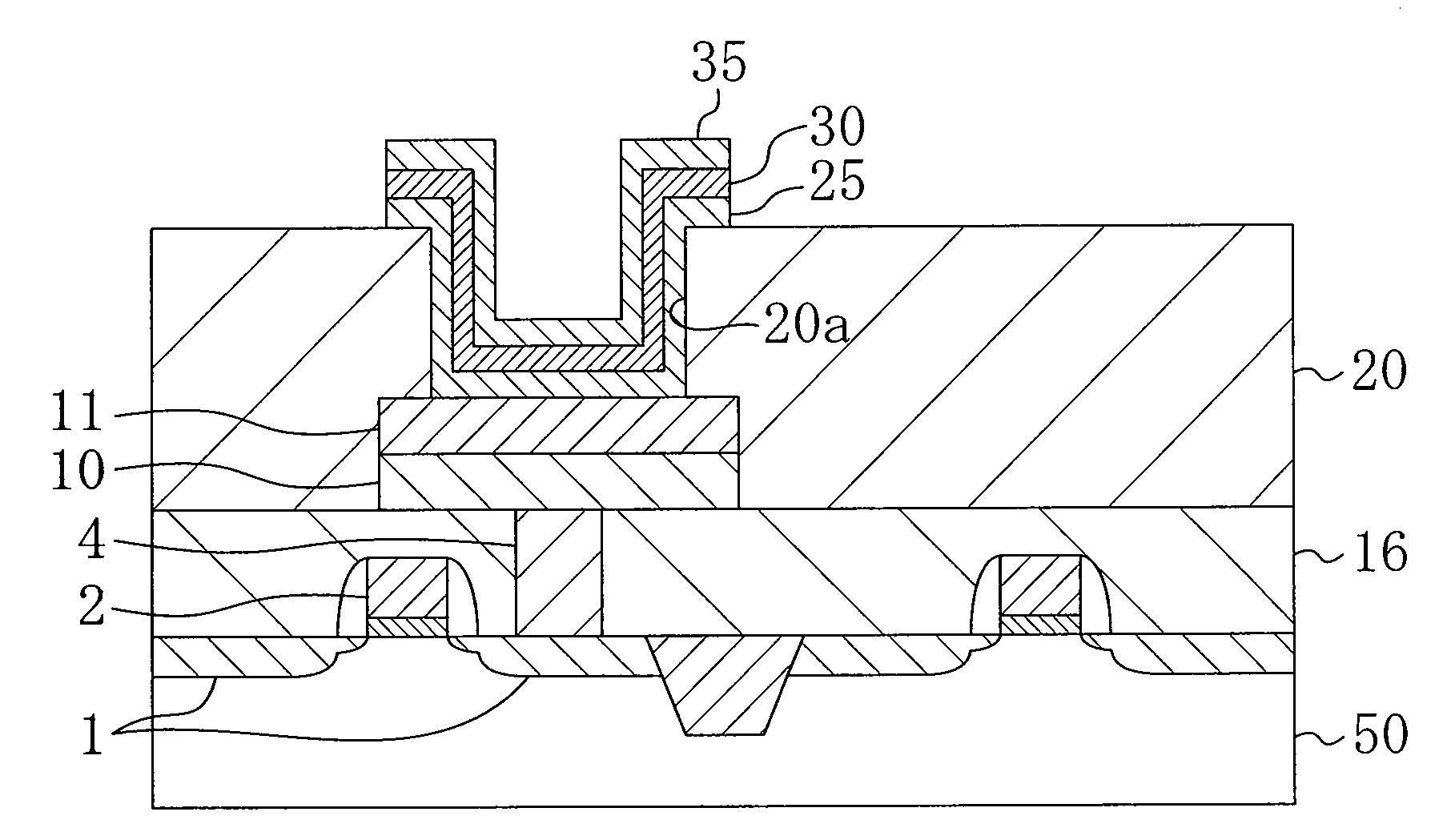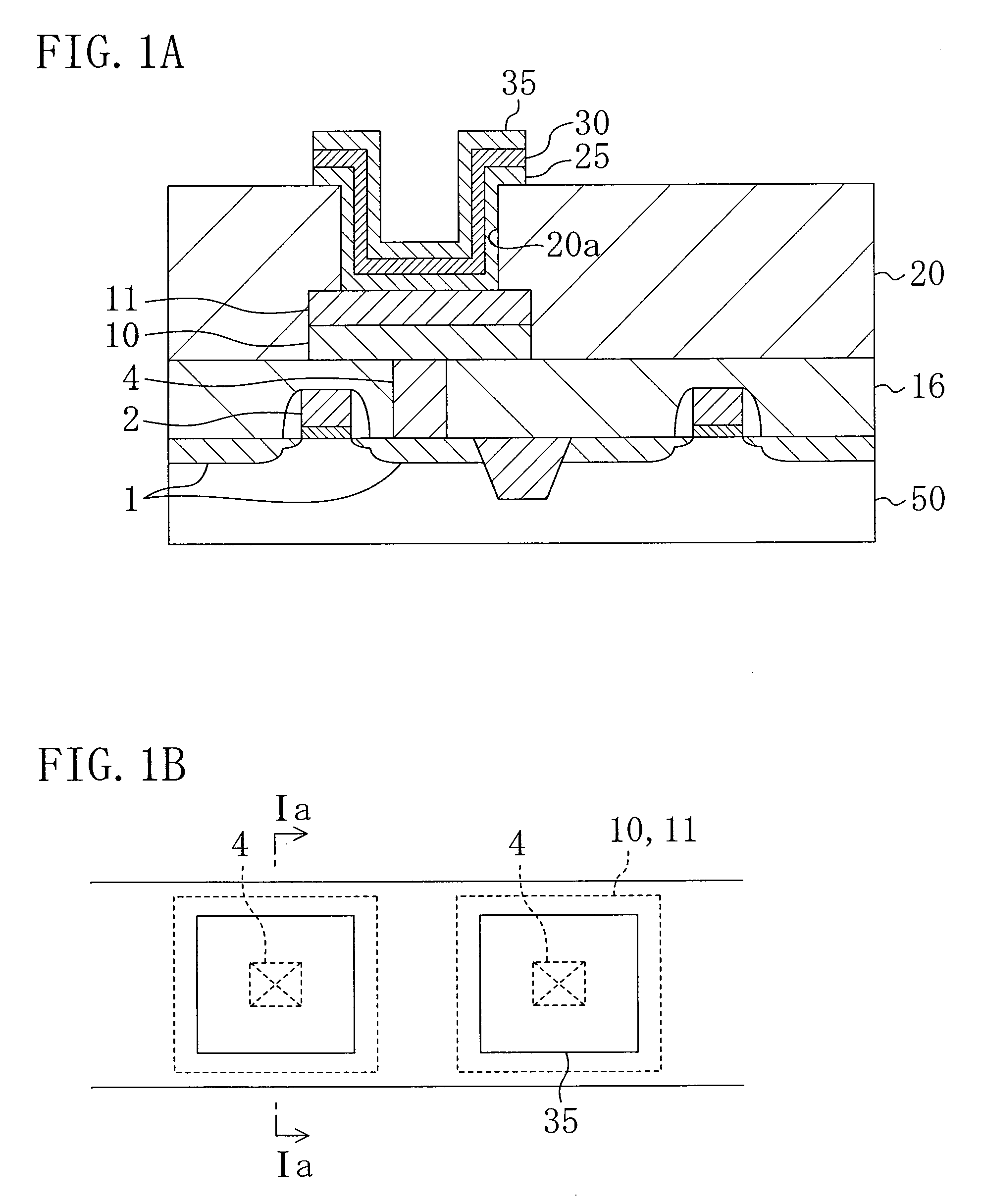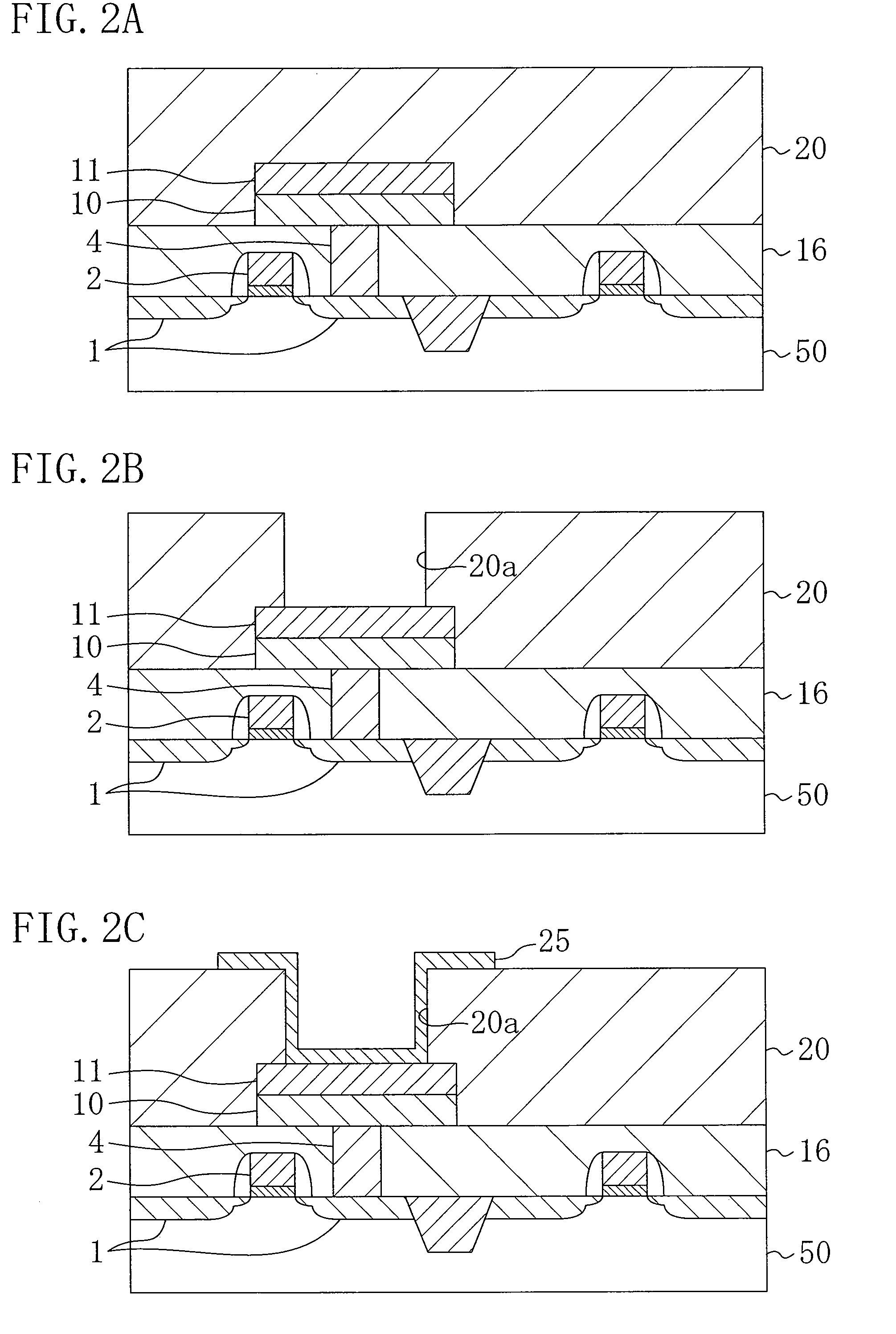Semiconductor storage device and manufacturing method of the same
a technology of semiconductor storage devices and manufacturing methods, which is applied in the direction of semiconductor devices, capacitors, electrical devices, etc., can solve the problems of inability to prevent a single-bit failure in a memory device, large breakage, and difficulty in ensuring the amount of charge necessary for memory operation of planar capacitive elements, so as to prevent the remanent polarization (2pr) of the capacitive elemen
- Summary
- Abstract
- Description
- Claims
- Application Information
AI Technical Summary
Benefits of technology
Problems solved by technology
Method used
Image
Examples
example embodiment 1
[0070]Example Embodiment 1 will be described below with reference to FIGS. 1 to 3.
[0071]FIGS. 1A and 1B show the main part of a semiconductor storage device in accordance with Example Embodiment 1, in which FIG. 1A is a cross-sectional view taken along the line Ia-Ia in FIG. 1B, and FIG. 1B is a plan view.
[0072]As shown in FIG. 1A, in the semiconductor storage device in accordance with the present exemplary embodiment, transistors including source / drain regions 1 and a gate electrode 2 are integrated in a semiconductor substrate 50, and a first interlayer insulating film 16 made of silicon oxide (SiO2), for example, is formed on the semiconductor substrate 50 to entirely cover the transistors. A contact plug 4 made of tungsten or polysilicon and connected to a source / drain region 1 of a transistor is formed in the interlayer insulating film 16. On the interlayer insulating film 16, an oxygen barrier film 10 is formed to be connected to the contact plug 4. The oxygen barrier film 10 ...
example embodiment 2
[0089]Example Embodiment 2 will be described below with reference to FIG. 5 to FIG. 7.
[0090]FIGS. 5A and 5B show the main part of a semiconductor storage device in accordance with Example Embodiment 2, in which FIG. 5A is a cross-sectional view taken along the line Va-Va in FIG. 5B, and FIG. 5B is a plan view. In FIG. 5, the same reference numerals are assigned to the same elements as those in FIG. 1 for omitting the description thereof.
[0091]Difference of the semiconductor storage device of Example Embodiment 2 from that of Example Embodiment 1 lies in that, as shown in FIG. 5A, a hole opening 20a formed in the second interlayer insulating film 20 passes through a conductive adhesive layer 11a and exposes the oxygen barrier film 10 therebelow. The hole opening 20a passing through the conductive adhesive layer 11a allows the conductive adhesive layer 11a to be in contact with the bottom electrode 25 at the wall surface of the hole opening 20a which includes the bottom corner thereof...
example embodiment 3
[0102]Example Embodiment 3 will be described below with reference to FIG. 8 to FIG. 11.
[0103]FIG. 8 shows the section of the main part of a semiconductor storage device in accordance with Example Embodiment 2. In FIG. 8, the same reference numerals are assigned to the same elements as those in FIG. 1 for omitting the description thereof.
[0104]Difference of the semiconductor storage device of Example Embodiment 3 from that of Example Embodiment 2 lies in that, as shown in FIG. 8, a conductive adhesive layer is formed with a stacked film of a first conductive adhesive layer 11b and a second conductive adhesive layer 13 thereon, and the second conductive adhesive layer 13 is opened at its central part to expose the first conductive adhesive layer 11b. Accordingly, the bottom electrode 25 is in contact with the first conductive adhesive layer 11b at the bottom corner of the hole opening 14a, while being in contact with the second conductive adhesive layer 13 at the lower part of the wal...
PUM
 Login to View More
Login to View More Abstract
Description
Claims
Application Information
 Login to View More
Login to View More - R&D
- Intellectual Property
- Life Sciences
- Materials
- Tech Scout
- Unparalleled Data Quality
- Higher Quality Content
- 60% Fewer Hallucinations
Browse by: Latest US Patents, China's latest patents, Technical Efficacy Thesaurus, Application Domain, Technology Topic, Popular Technical Reports.
© 2025 PatSnap. All rights reserved.Legal|Privacy policy|Modern Slavery Act Transparency Statement|Sitemap|About US| Contact US: help@patsnap.com



